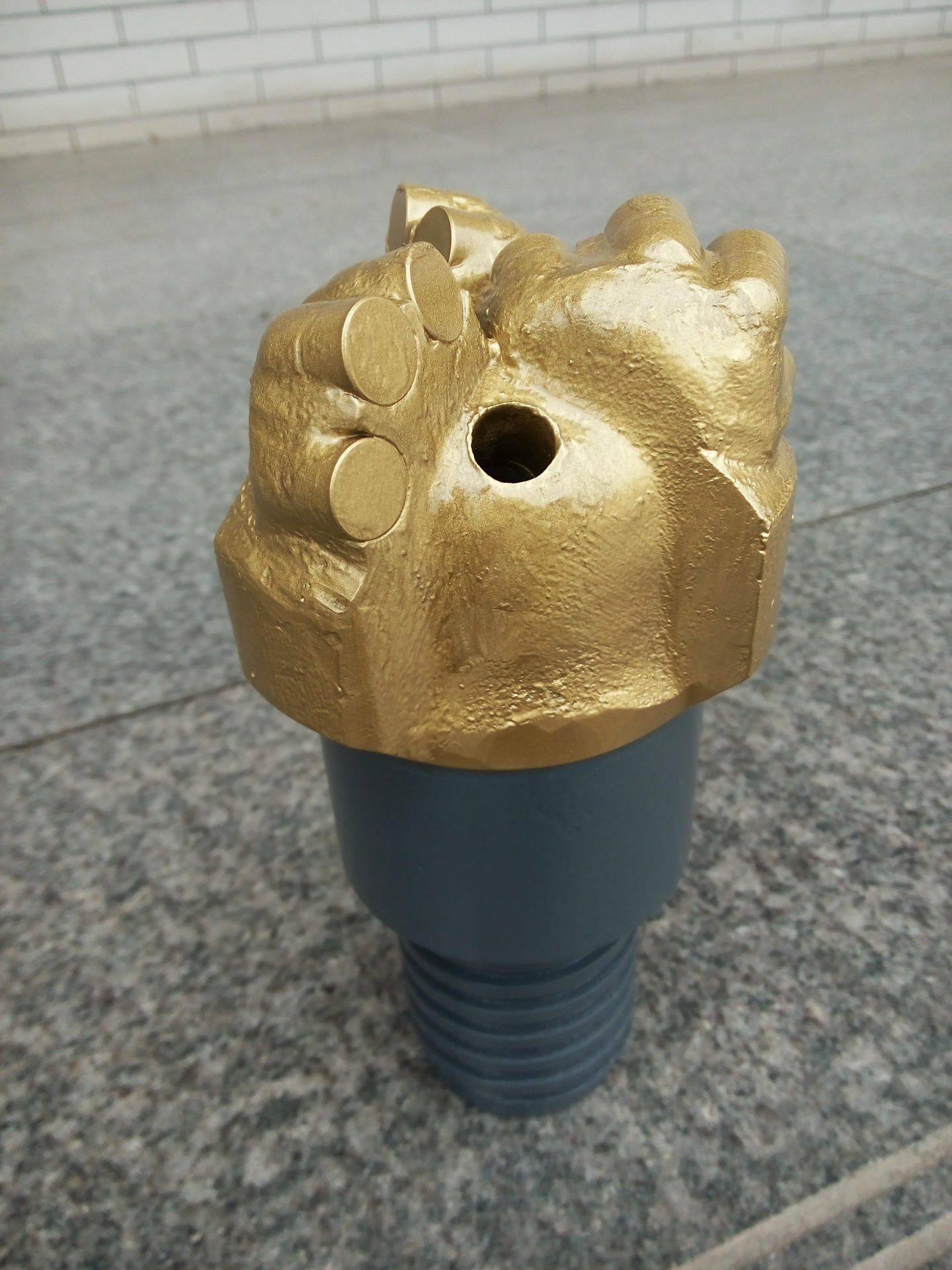About the use of diamond bits and the rock breaking mechanism of diamond bits
Related products Link:
The quality of the diamond bit and whether the type of the bit is compatible with the lithology of the formation play an important role in accelerating the drilling speed and increasing the footage of a single bit. Drilling an oil and gas well generally requires multiple drill bits of different sizes. When drilling the upper formation, a drill bit with a larger Z diameter is used. Because the formation drilled by the drill bit is soft, a single drill bit has more footage and a shorter use time. Generally, several wells can be reused; when drilling the lower formation, a drill bit with a smaller Z diameter is used. Because the formation is hard and the footage of a single drill bit is small, multiple drill bits are generally used. The drilling footage of a new drill bit going down the well mainly depends on the size and type of the drill bit, the hardness and softness of the formation and the cooperation of drilling parameters. Generally speaking, the smaller the drill bit size, the harder the formation, the less footage; the larger the drill bit size, the softer the formation, the more footage.
Advantages of diamond drill bits
1. The force balance design makes the drill bit have good guiding performance, suitable for directional drilling with downhole motor, and has small radial vibration;
2 The reasonable arrangement of patented PDC composite sheets with different structures in different positions of the drill bit makes the drill bit more aggressive and anti-abrasive;
3 Strong aggressive design enables the drill bit to obtain high ROP;
4 The dynamic flow field simulation technology is applied to the hydraulic design to optimize the flow field Z at the bottom of the well, which is conducive to improving the speed of chip removal and preventing mud bagging.
Rock breaking mechanism of diamond bit
The rock-breaking effect of diamond drill bits is not only related to lithology and external factors affecting lithology (such as pressure, temperature, formation fluid properties, etc.), the weight on bit is an important influencing factor. Like the roller cone bit, it has surface fracture when breaking rock.
The rock-breaking effect of the diamond drill bit is accomplished by diamond particles. To know the rock-breaking effect of the drill bit, it is necessary to understand the rock-breaking effect of single-grain diamond. In hard formations, the single-grain diamond puts the rock in a high stress state (about 4200-5700MPa, some data think it can reach 6300MPa) under the action of drilling pressure, which makes the rock change from brittle to plastic. The single-grain diamond eats into the formation, and under the action of torque, it cuts and breaks the rock. The cutting depth is basically equal to the diamond grain's eating depth. This process is like "plowing the ground", so it is called the plow cutting action of the diamond drill bit.
In some brittle rocks (such as sandstone, limestone, etc.), the volume of the broken rock is much larger than the ingestion and rotation volume of the diamond particles under the simultaneous action of the drilling pressure torque on the diamond particles on the drill bit. When the pressure is not high, small grooves can only be formed along the direction of diamond movement, and increasing pressure will break the rocks in the deep part of the small groove and on both sides, exceeding the cross-sectional size of diamond particles.
The rock-breaking effect of diamond drill bits is not only related to lithology and external factors affecting lithology (such as pressure, temperature, formation fluid properties, etc.), the weight on bit is an important influencing factor. Like the roller cone bit, it has three methods of surface crushing, fatigue crushing and volume crushing when breaking rocks. Only when the diamond particles have enough specific pressure to eat into the formation rock and cause the volume of the rock to be broken, can the ideal rock breaking effect be achieved.
The process of using diamond drill bit
1. Diamond drill bit preparation
1. Check whether the last diamond bit has bit body damage, tooth loss, etc., and make sure the bottom of the well is clean and free of falling objects.
2. Handle the diamond drill bit carefully, and place the diamond drill bit on a rubber mat or a wooden board. It is forbidden to place the diamond drill directly on the iron plate.
3. Check whether the cutting teeth of the diamond drill bit are damaged, whether there is any foreign matter in the diamond drill bit, whether there is an O-ring in the nozzle hole, and install the nozzle as required.
2. Diamond bit make-up
1. Clean the diamond bit pin or box and apply thread oil.
2. Clamp the shackle on the diamond drill bit, lower the drill string to make it contact with the pin or box to make up.
3. Put the diamond drill bit and the shackle into the center bushing of the turntable, and then tighten the threaded thread according to the recommended make-up torque value.
3. Drill down
1. The diamond bit should be lowered slowly, especially when passing through the turntable, blowout preventer, and casing hanger, so as to protect the cutting teeth. 2. Pay attention to the blocked well section during the last pull-out, and let the drill bit pass slowly when encountering shrinkage and doglegs during the run-in process.
3. When it is about 1 single root away from the bottom of the well, it starts to rotate at a drilling speed of 50~60rpm and starts the pump with a rated displacement to flush the bottom of the well.
4. Pay attention to observe the weight scale and torque to make the diamond bit touch the bottom of the well smoothly.





